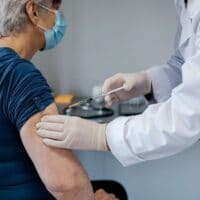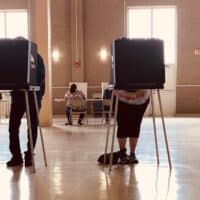It has been five months since Kentucky announced its first case of COVID-19. As the coronavirus has spread rapidly through the country, infecting more than 34,500 Kentuckians and more than 4.5 million Americans, disinformation about the virus has spread almost as quickly.
Almost daily, the Lexington Herald-Leader gets messages and emails from people questioning the basic facts that have caused our lives to be completely upended.
Here’s the truth about some of the most frequent COVID-19 myths.
‘COVID-19 is just like the flu’
There are similarities between the flu and COVID-19, which are two separate viruses. Both are respiratory illnesses that can cause mild to severe illness. With both, you can spread it at least one day before you start showing symptoms, according to the Centers for Disease Control and Prevention .
But even with the government imposing measures to limit the spread of the novel coronavirus, more than 158,00 Americans have died from COVID-19 this year. In comparison, between October 1, 2019 and April 4, 2020, the Centers for Disease Control and Prevention estimated between 24,000 and 62,000 flu deaths. Scientists estimate that the mortality rate for the flu is around 0.1 percent. In Kentucky, 2.21 percent of people with known cases of COVID-19 have died.
Scientists expect that percentage to continue decreasing as testing expands and treatments improve, but even a 1 percent mortality rate would be 10 times the death rate of flu.
COVID-19 seems to affect the body in different ways than other respiratory illnesses, said Dr. Kathleen Winter, an assistant professor of epidemiology at the University of Kentucky .
“Even though some of the clinical symptoms are the same, there are a myriad of ways that COVID-19 affects the body that we’re still learning about,” Winter said.
There is another really big difference between COVID-19 and the flu — COVID-19 is new. That means not as many people have been exposed to it. It means scientists are still learning about the virus as we navigate the pandemic. It means there has been no time to develop a treatment or a vaccine.
“Truly, we are learning more and more about this virus every week and we still don’t have great treatment,” Winter said.
‘Cases are only increasing because we’re testing more’
Kentucky has increased its testing capacity. In the month of July, 224,925 Kentuckians were tested, the most of any month in the pandemic. That coincided with 14,527 cases, also the highest of any month since the pandemic began.
But scientists have a metric to determine if the frequency of cases is increasing, even when there are more people being tested. It’s called the positivity rate. The positivity rate takes the total number of people who tested positive and divides it by the total number of people who were tested.
In using that metric, scientists are able to take out the variability of how many people are being tested and instead focus on what percentage of tests are coming back positive. In the month of July, 6.46 percent of tests in Kentucky came back positive, nearly double the 3.42 percent of tests that came back positive in June.
Scientists look at more than just the positivity rate when making decisions about what to shut down, but Kentucky’s rate was a factor in causing Beshear to issue an order making masks mandatory when around other people and to shut down bars and lower capacity at restaurants for two weeks.
‘The number of cases is inflated because they count people multiple times’
They’re not counting people multiple times.
When Beshear reads out the daily number of new positive cases, he’s reading out numbers that have been “de-duplicated,” a process where the public health department goes through and eliminates anyone who has already tested positive for the virus.
“When we tell you how many new positives are today, we have de-duplicated those numbers,” said Dr. Steven Stack, the state commissioner of public health. “So if we tell you there are 300 positives today and 200 positives tomorrow, those are five hundred different people.”
Don’t believe the state? How about your local health department? Kentucky’s 61 local health departments track cases at the county level because they’re responsible for contact tracing and monitoring the spread of the virus. When added up, local health departments have consistently reported a higher number of cases than Beshear, in part because of the way the governor collects his data.
‘COVID-19 deaths are inflated because they count unrelated deaths’
A death from COVID-19 is only counted in the state’s total when the virus causes the death or is a contributing factor, Winter said. When there’s confusion about whether the virus played a role in the death, it’s sent to a state review committee that determines whether it should be counted.
“If you’re in a car accident and you have covid are we going to say you’re a covid death?” Stack said on July 22. “The answer is no, your death will be categorized as an automobile accident.”
While many of the people who have died from the virus have had underlying health conditions, that doesn’t mean they would have died on that particular day, and maybe not for several years, had they not contracted COVID-19.
Winter said she is baffled by the myth that death numbers are inflated. She said the hospitalization rate consistently goes along with the fatality rate.
“What seems so absurd to me is that it’s so not what my experiences are with reality,” Winter said.
‘Only old people are dying so only they need to be careful’
Older people are disproportionately dying from the virus, but they’re often catching it from someone younger.
In Kentucky, around 50% of the COVID-19 deaths have been people who are older than 80, even though they only make up around 5.5% of cases. Of the people older than 80 who have caught the virus, about 20% died. That death rate drops with age. About 8% of Kentuckians in their 70s who have caught the virus have died. It’s about 3.5% for Kentuckians in their 60s.
It is also true that a majority of Kentucky’s COVID-19 deaths have been associated with nursing homes. As of Wednesday, about 64 percent of Kentucky’s COVID-19 deaths were nursing home related.
Many of those deaths came when the state was on lockdown and with visitors barred from nursing homes. As nursing home residents generally aren’t traveling much, that means the virus was brought into the nursing homes by staff who weren’t showing symptoms.
Those staffers go home everyday, so any spread in the community can get into the nursing homes.
Dr. Deborah Birx, a top adviser on the White House’s coronavirus task force, noted that Kentucky is seeing a growth in cases in people between the ages of 20-39. Birx warned that is dangerous, because younger people can pass it on to their parents or grandparents, who may be more vulnerable.
The virus can also affect people in more ways than just dying. Many who have recovered say they still feel lingering effects of the virus. “There’s a lot of bad between getting infected and dying that we need to consider,” Winter said.
‘Kids can’t get it or transmit it’
More than 4,000 Kentuckians under the age of 19 have tested positive for COVID-19. That includes more than 1,000 children younger than 9. More than 100 childcare facilities in Kentucky have experienced cases affecting 75 children.
While children tend to be spared the more severe symptoms of the disease, they are susceptible to pediatric multisystem inflamatory syndrome, a serious condition that sometimes comes after the child has recovered from covid-19 and can result in hospitalization or death.
There is no scientific evidence that children do not spread the disease. There was a recent study that showed children under 10 do not spread the disease as easily as adults, but can still spread it, and that those between 10 and 19 spread the disease just as easily as adults.
Winter also pointed out that children are less likely to have symptoms and are therefore less likely to get tested.
‘We need herd immunity. It’s a hoax. People are just going to die.’
Public officials have imposed social distancing guidelines in order to minimize the number of people who die from the virus before a vaccine or effective treatment is developed.
Ditching those guidelines for the sake of herd immunity — the idea that if you just let the virus run its course enough people will get it and recover so it won’t transmit so easily — both underestimates the amount of people who would have to get the virus and assumes that any immunity someone gets against the virus will last.
In order to achieve herd immunity, scientists say at least 70 percent of the population would have to be infected. That would be around 229.7 million Americans. According to Johns Hopkins University, 5 million Americans have been infected with the virus, leading to 162,938 deaths. If you were to take the current death rate, which might be an underestimate since hospitals would almost certainly be overwhelmed, and apply it to 229.7 million cases, around 7.5 million Americans would die. That’s more than the population of Los Angeles and Chicago combined. In 2018, a total of 2.8 million Americans died, according to the CDC.
Scientists are still trying to figure out how long immunity lasts, but there are some studies that indicate it might only last two to three months.
“We’re all dying, some just more quickly than others,” Stack said at one of Beshear’s daily press conferences. “I am not here to separate you from your death. I would just like to delay it as long as I reasonably can.”
This article is republished with the permission of the Lexington Herald-Leader.
The Lexington Herald-Leader is a Lexington-based newspaper owned by The McClatchy Company.






